Uveitis
Controlling inflammation and healing cells could be the key to controlling this eye disease
Uveitis is an inflammation of the uvea, or eye wall—the middle layer of tissue of the eye. Whereas conjunctivitis affects the outer layer of the eye, uveitis affects the interior of the eye in the front, middle, or back of the organ.
There are many different causes of uveitis, and it can lead to glaucoma, cataracts or blindness if left untreated.
Although considered a rare condition, it is the third most common cause of blindness in developed nations and afflicts nearly 2 and a half million people¹ worldwide.
Uveitis can come on suddenly or progressively over time, and cause vision changes ranging from mild to severe vision loss.
Currently, uveitis is primarily treated with anti-inflammatory eyedrops—but AAGP® could hold the key to a more powerful and effective solution.

What causes uveitis
Uveitis can be caused by several factors, and it’s not always easy to determine the culprit. Many times, the inflammation is due to an autoimmune condition or systemic inflammation, such as that created by rheumatoid arthritis. It can be spurred by an infection such as shingles or toxoplasmosis. It can even be brought about by an injury to the eye.
In some cases, doctors cannot identify the underlying cause of uveitis.
Uveitis symptoms
One of the most visible signs of uveitis is redness of the eye. Other symptoms can include:
- Eye pain
- Vision impairment
- Light sensitivity
- Seeing floating specks or spots
- Blurry vision
Treatment for uveitis
Uveitis is often treated with anti-inflammatory eye medications such as corticosteroids. These medications may be administered via eye drops, injections, or tablets taken by mouth. Eye drops that widen or dilate the pupil may also give relief.
If uveitis is determined to be caused by an underlying infection, the doctor may treat it with antibiotics or antivirals.
If the root cause is an inflammatory immune response, then immunosuppressants may be called into play. However, the side effects from these medications may mean that they’re only used if the uveitis severely threatens vision.
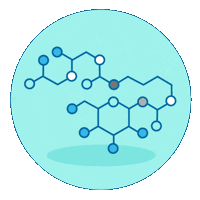
AAGP® as a potential solution
Side effects and suboptimal outcomes have created the need for more effective solutions — and that’s where AAGP® comes in. Thanks to the unique protection this proprietary glycopeptide offers to inflamed cells, eye treatments containing AAGP® could reduce inflammation and provide relief from uveitis. AAGP® has been shown to improve cell survivability and functionality, both which could yield a pathway to healing disease.
ProtoKinetix research and clinical trials
Our research has yielded exciting results in ophthalmic care, showing promise in the treatment of oculuar inflammation.
See our research pipeline to review the status of our active research as we explore new solutions.
Market potential for uveitis
Globally, the market potential for uveitis treatments is projected to reach nearly $700 million by 2026, with a CAGR of 4.6%² to 5.8%. With the rising incidence of uveitis, demand for treatment will rise too.
2018 Market Revenuet:
$478 Million

2026 Market Forecast:
$687 Million
Applications of AAGP® in Ophthalmology
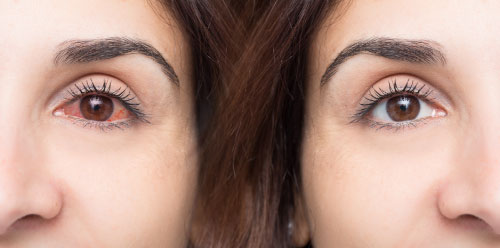
According to the Mayo Clinic, dry eye disease occurs when our bodies cannot produce enough tears to adequately lubricate our eyes. This can result in discomfort, itching, stinging, burning and even vision problems.
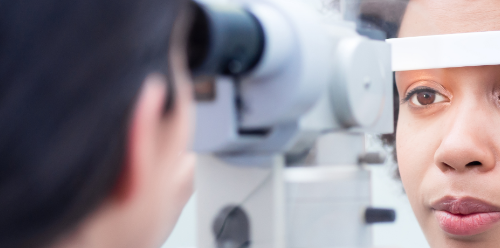
In addition to other complications, diabetes can adversely affect the eyes by causing diabetic retinopathy, or damage and deterioration of the blood vessels in the retina. In fact, diabetic retinopathy is the number one cause of blindness in young adults, according to the American Academy of Family Physicians.
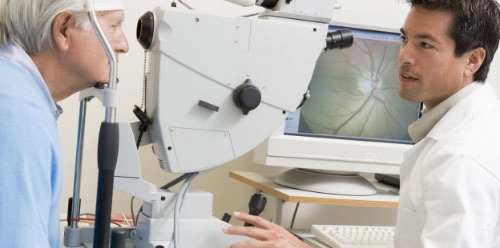
According to the National Eye Institute, age-related macular degeneration (AMD) is a disease often occurring in older people, involving damage to the macula (the focal center of the eye responsible for “20/20” color vision), which can affect the central vision required for daily activities, such as reading, cooking and driving.
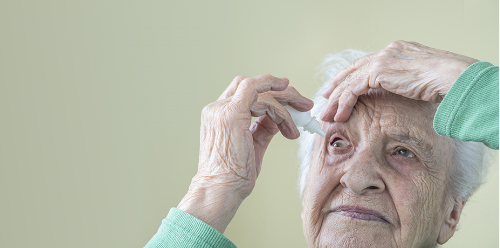
Sjogren’s syndrome is an autoimmune condition in which a body’s own immune system attacks the cells in the moisture-producing salivary glands and tear ducts. The outcome of this autoimmune response is painfully dry eyes and mouth.

Research Pipeline for Ophthalmology:
Research:
Development:
We are in stage-3 of our pre-clinical retinal replacement program. The Gregory-Evans Retinal Therapeutic Lab at The University of British Columbia is testing whether AAGP® treated cells continue to develop into retinal cells. If successful, this could lead to the restoration of vision in humans. For example, retinal cell replacement therapy could become a critical approach for the treatment of retinal diseases including Age-Related Macular Degeneration (AMD).
Research:
Development:
Dry eye disease afflicts more than 30 million people in America and 430 million people around the world. We’re going to look into the effects of AAGP® on ocular inflammation when applied topically. With this biotechnology, we’re hoping to improve the quality of tears that lubricate and nourish the eye. This will help the hundreds of millions of people affected by this chronic issue.
Veterinary treatments
Research:
Development:
It’s possible that you don’t suffer from dry eye or other eye conditions, but your pets do. We plan on researching AAGP® in veterinary treatments. As we move through the discovery phase, we’ll narrow down our line of exploration to find out how we can improve ophthalmology care in animals.
Explore other Industry applications for AAGP®
You can support our research into uveitis treatments while supporting your own financial future. To learn about potential research options, contact your broker or reach out to the ProtoKinetix team.


